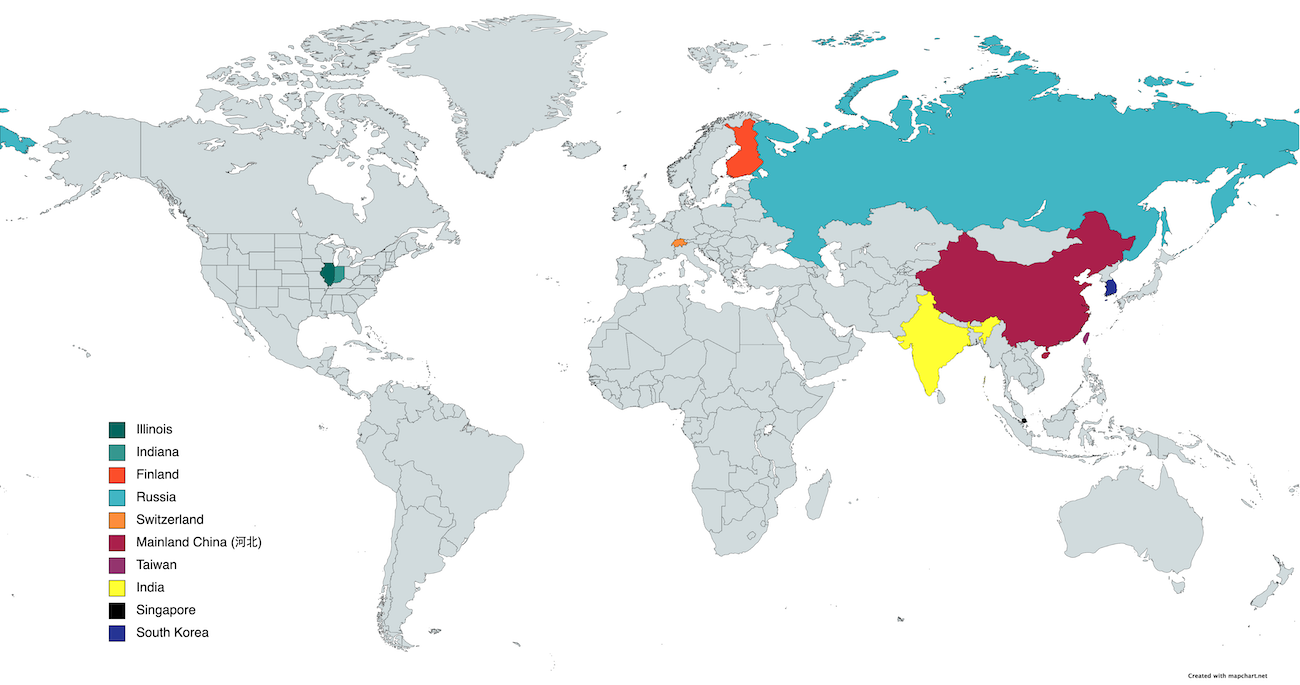Where are we from?
I work with an international, multicultural, and multidisciplinary research group of students. The cultural backgrounds of our members are located on the global map as follows.

Where do my students get the job?
I encourage students to get internships and full-time jobs at top research institutes. The list of employers is as follows:
- Internships: Adobe, Amazon, Google, Google X, Intel, LinkedIn, Microsoft, MERL, Meta, Qualcomm, Smule, Spotify
- Full-time positions: Amazon, Microsoft, Naval Surface Warfare Center
* The above list does not include job offers the students had to turn down.
How are we funded? How are students financially supported?
I appreciate research funding from various federal, corporate, and international sponsors: The National Science Foundation, ETRI and Ministry of Science and ICT (Korea), Intel Corp., Synaptics, Amazon, MERL, and Adobe Systems, Inc.
During the academic year (i.e., spring and fall semesters), students are mostly hired as research assistants from the research funding. Sometimes, they are also hired as an associate instructor (teaching assistants) for my Machine Learning for Signal Processing or Deep Learning Systems courses. Occasionally, they are also supported by fellowships and internships during the semesters. Below are the statistics about their academic support. Out of 58 total semesters as of spring 2024 (the total period of time all students spent under my guidance),
- Research Assistant: 48
- Fellowships: 11
- Associate Instructor: 11
- Internship: 1
How long does it take to get the Ph.D. degree on average?
My Ph.D. students spend four to six years in their program to graduate. The time varies depending on their job search, research progress, and whether they have a master’s degree.
